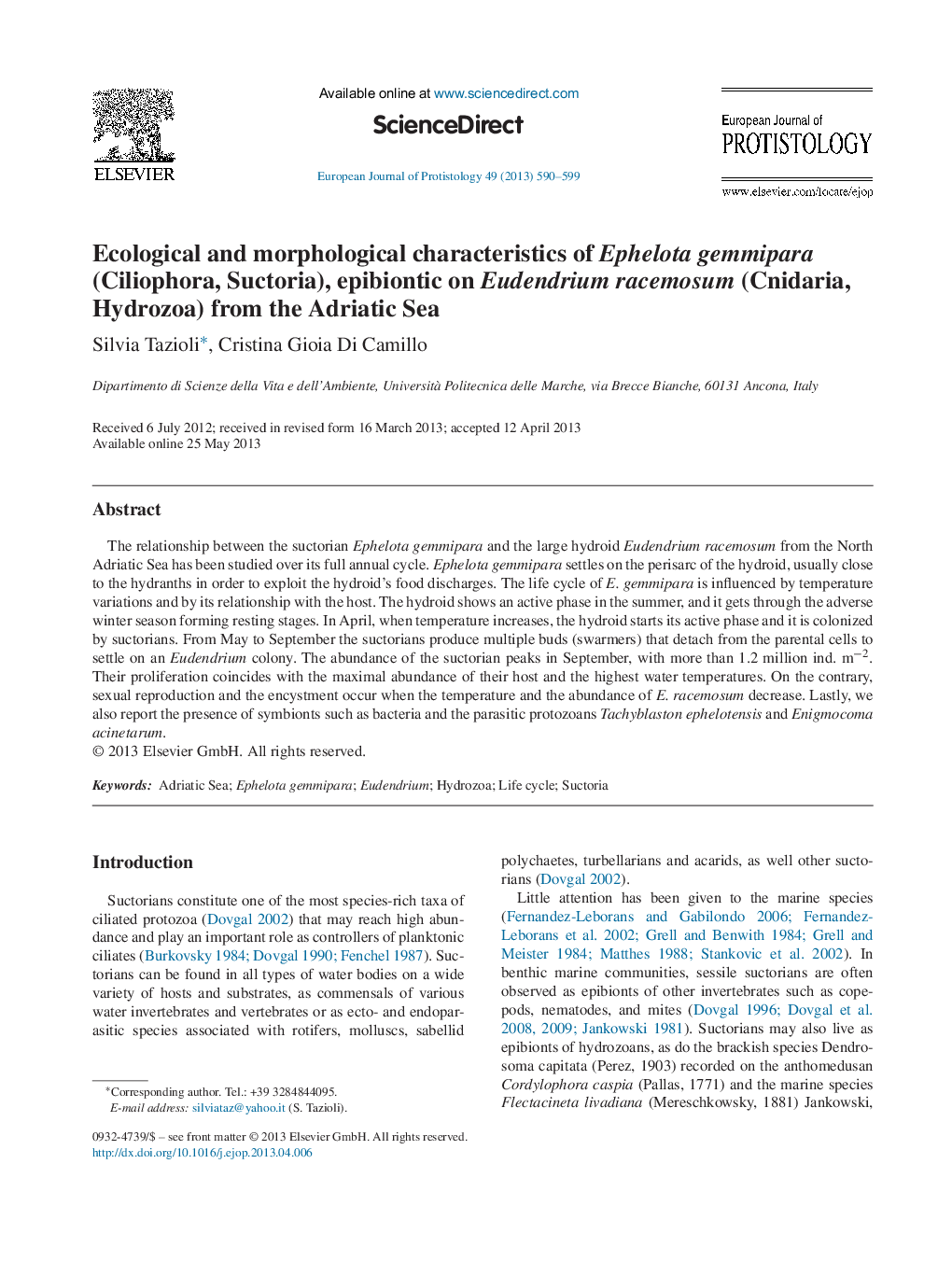| کد مقاله | کد نشریه | سال انتشار | مقاله انگلیسی | نسخه تمام متن |
|---|---|---|---|---|
| 2047052 | 1543295 | 2013 | 10 صفحه PDF | دانلود رایگان |

The relationship between the suctorian Ephelota gemmipara and the large hydroid Eudendrium racemosum from the North Adriatic Sea has been studied over its full annual cycle. Ephelota gemmipara settles on the perisarc of the hydroid, usually close to the hydranths in order to exploit the hydroid's food discharges. The life cycle of E. gemmipara is influenced by temperature variations and by its relationship with the host. The hydroid shows an active phase in the summer, and it gets through the adverse winter season forming resting stages. In April, when temperature increases, the hydroid starts its active phase and it is colonized by suctorians. From May to September the suctorians produce multiple buds (swarmers) that detach from the parental cells to settle on an Eudendrium colony. The abundance of the suctorian peaks in September, with more than 1.2 million ind. m−2. Their proliferation coincides with the maximal abundance of their host and the highest water temperatures. On the contrary, sexual reproduction and the encystment occur when the temperature and the abundance of E. racemosum decrease. Lastly, we also report the presence of symbionts such as bacteria and the parasitic protozoans Tachyblaston ephelotensis and Enigmocoma acinetarum.
Journal: European Journal of Protistology - Volume 49, Issue 4, November 2013, Pages 590–599